
How to Use Fermion: MEMS Volatile Organic Compounds VOC Gas Detection Sensor (Breakout, 1-500ppm): Examples, Pinouts, and Specs
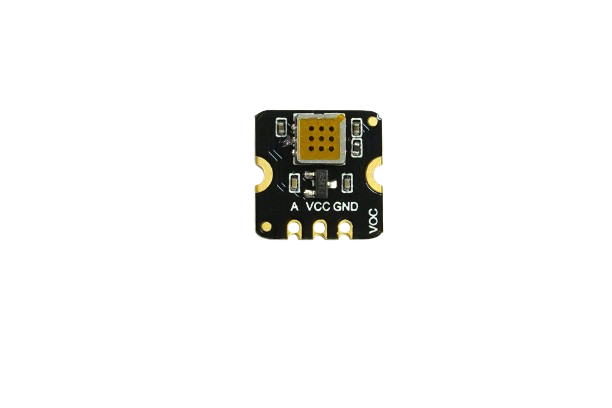
 Design with Fermion: MEMS Volatile Organic Compounds VOC Gas Detection Sensor (Breakout, 1-500ppm) in Cirkit Designer
Design with Fermion: MEMS Volatile Organic Compounds VOC Gas Detection Sensor (Breakout, 1-500ppm) in Cirkit DesignerIntroduction
The :Fermion: MEMS Volatile Organic Compounds (VOC) Gas Detection Sensor is a high-performance sensor module designed to detect VOCs in the air. With a detection range of 1-500 parts per million (ppm), this sensor leverages Micro-Electro-Mechanical Systems (MEMS) technology to provide high sensitivity and accuracy. It is ideal for applications in air quality monitoring, industrial safety, environmental testing, and smart home systems.
Explore Projects Built with Fermion: MEMS Volatile Organic Compounds VOC Gas Detection Sensor (Breakout, 1-500ppm)
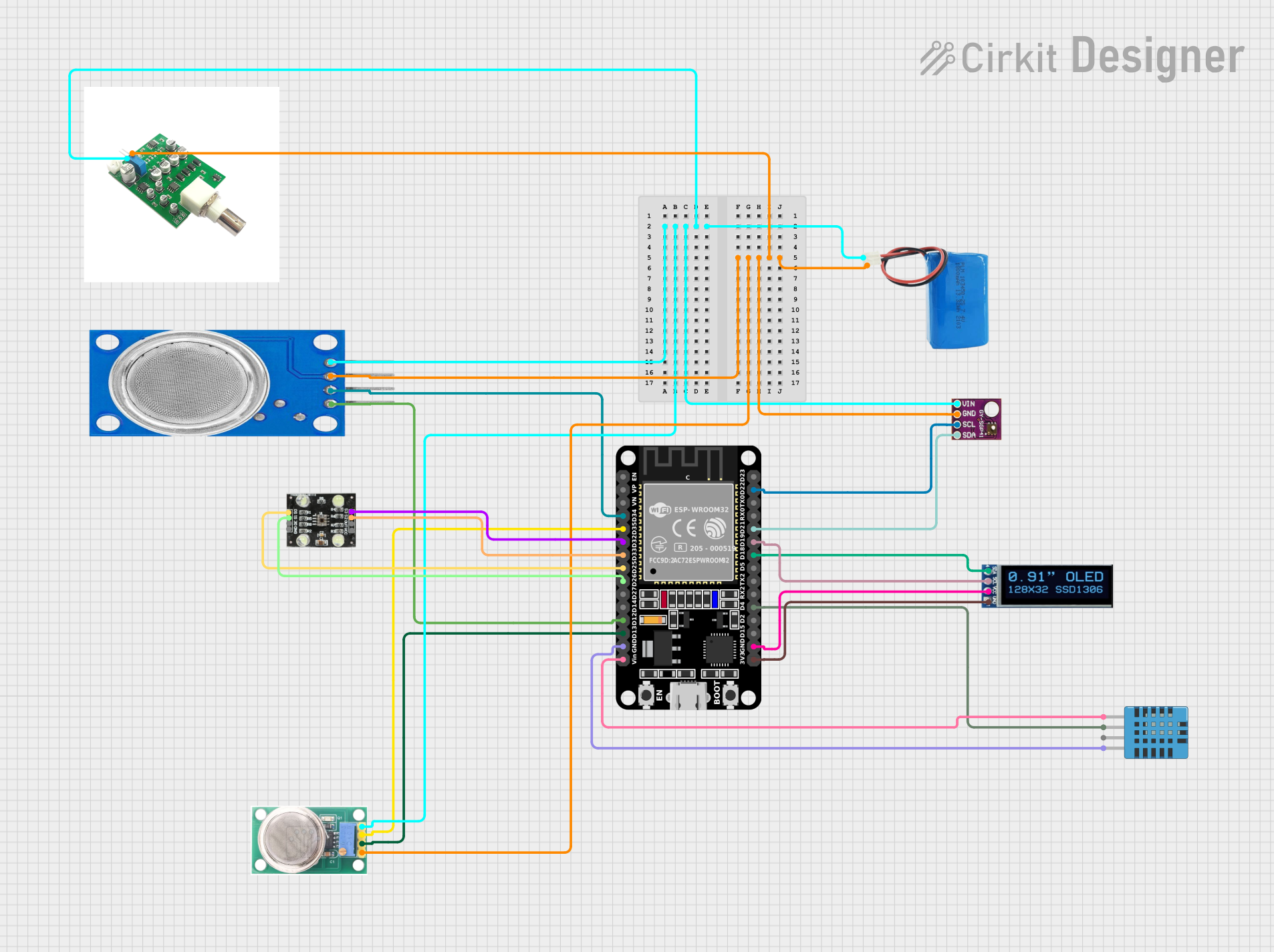
 Open Project in Cirkit Designer
Open Project in Cirkit Designer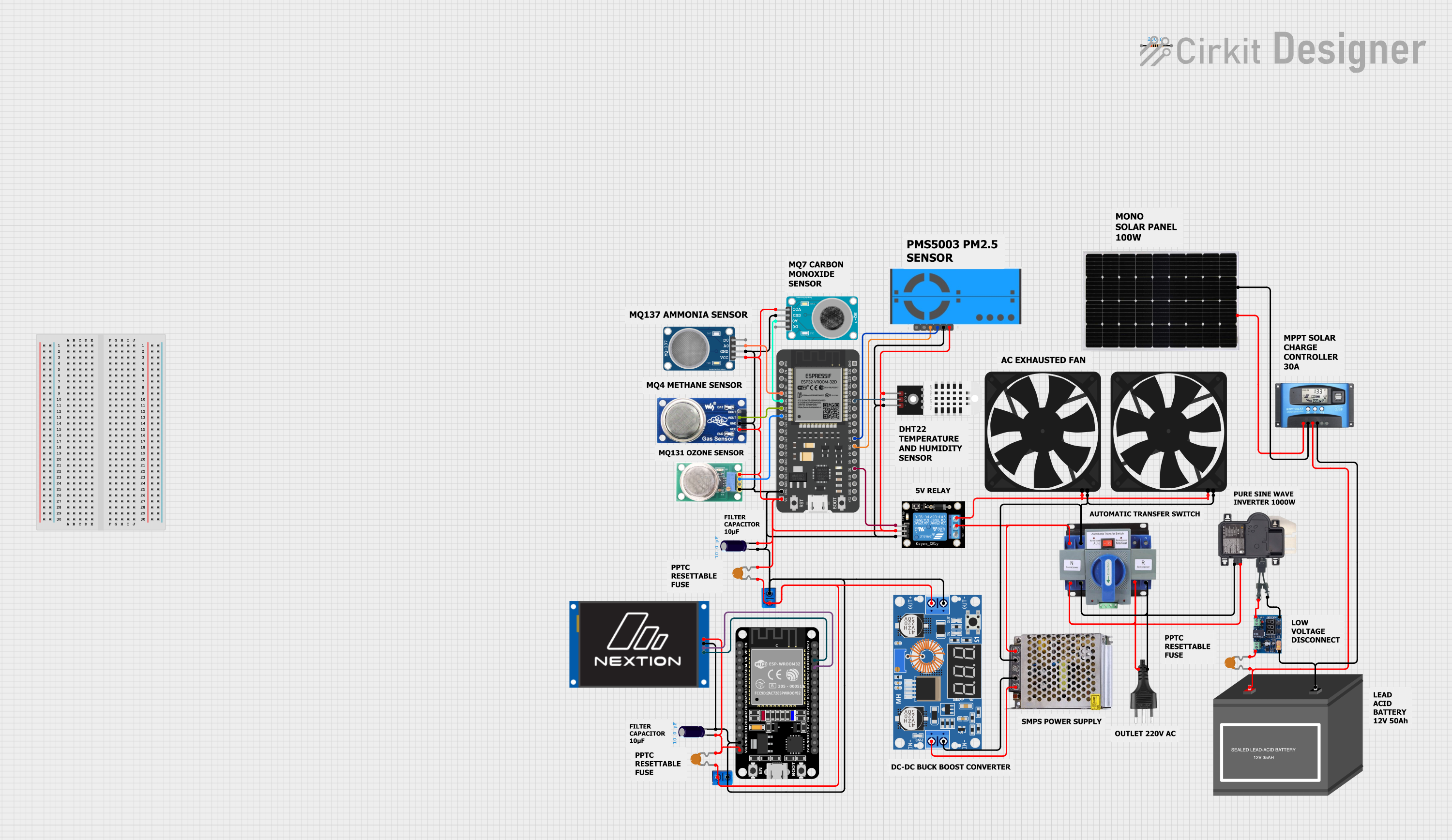
 Open Project in Cirkit Designer
Open Project in Cirkit Designer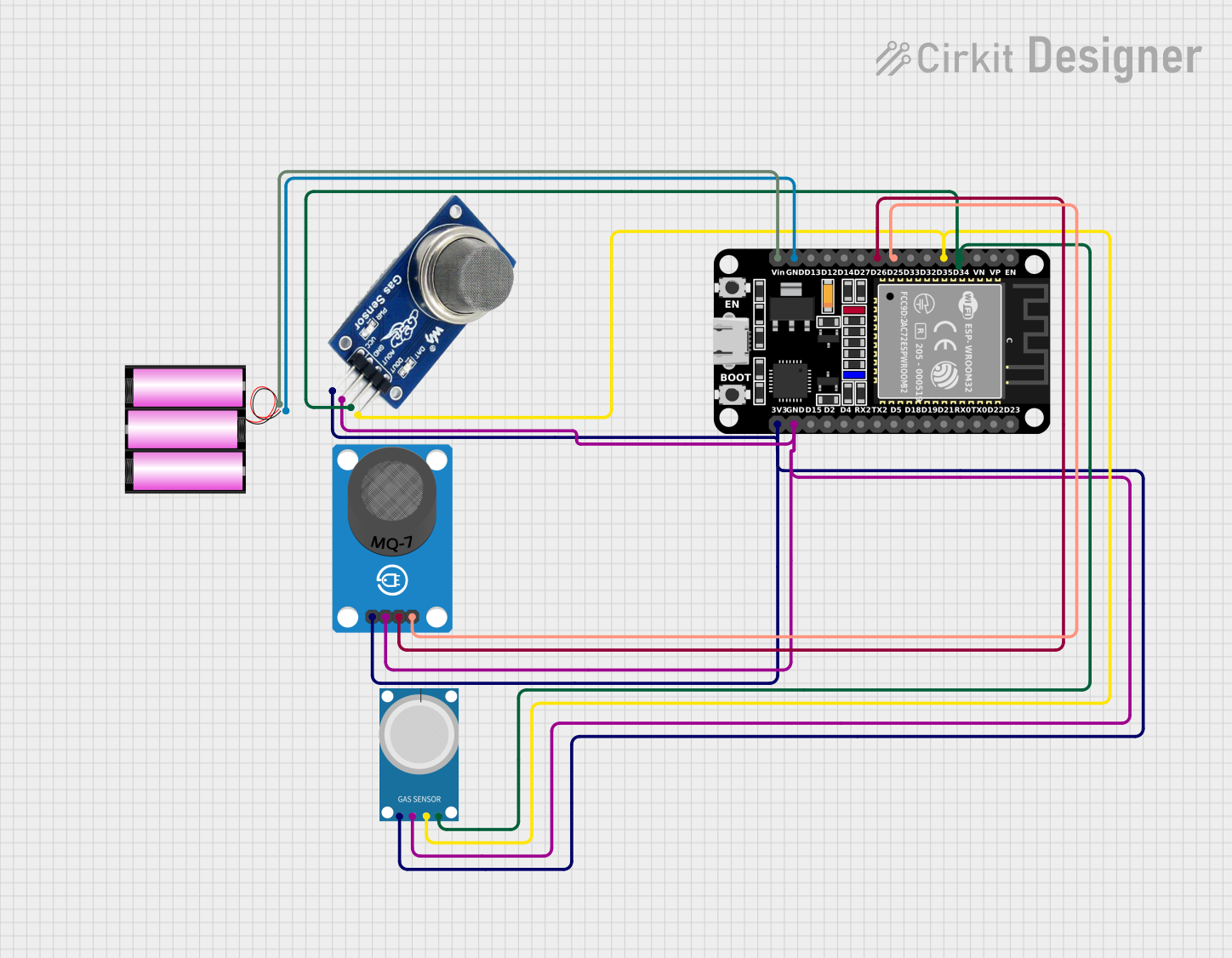
 Open Project in Cirkit Designer
Open Project in Cirkit Designer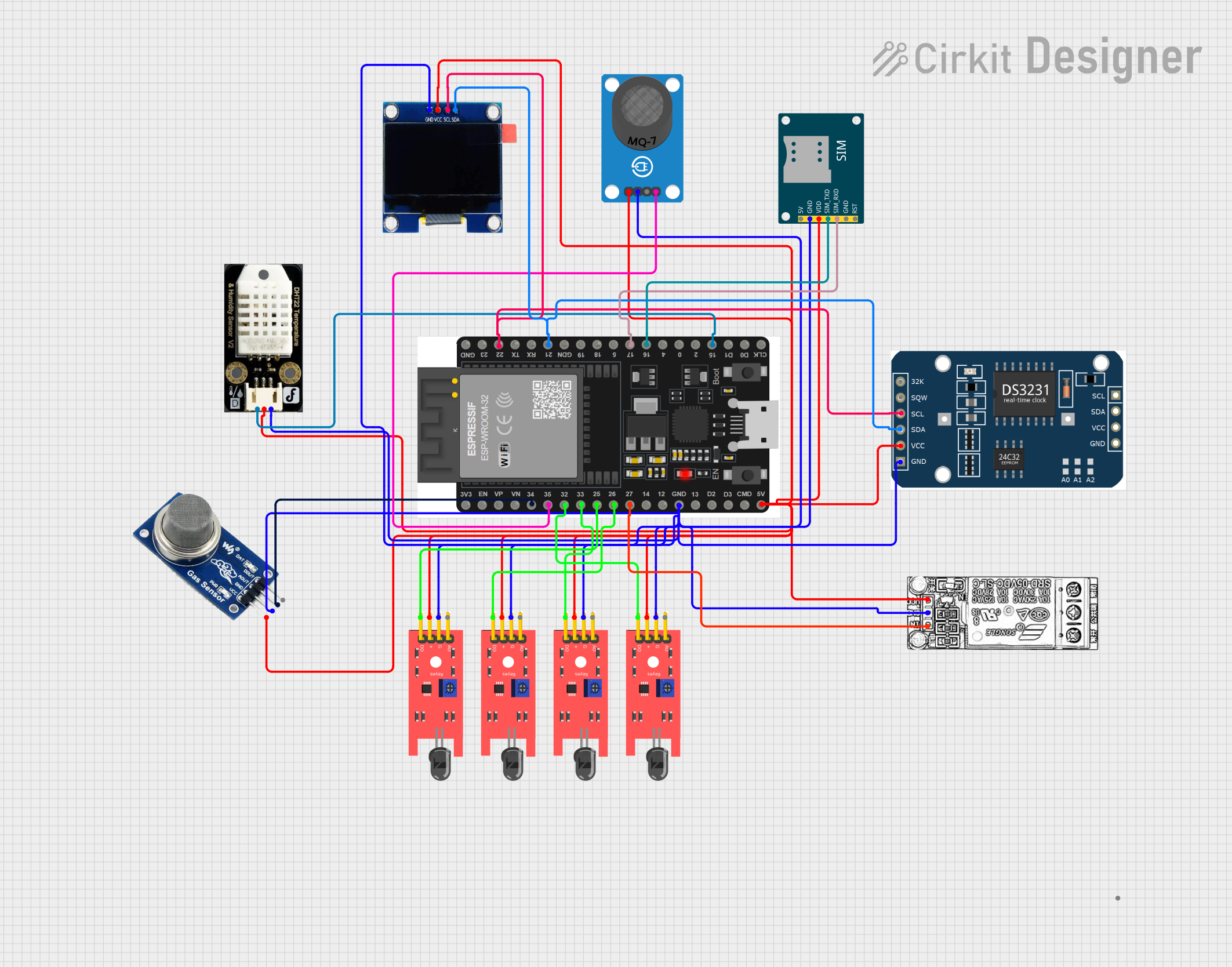
 Open Project in Cirkit Designer
Open Project in Cirkit DesignerExplore Projects Built with Fermion: MEMS Volatile Organic Compounds VOC Gas Detection Sensor (Breakout, 1-500ppm)

 Open Project in Cirkit Designer
Open Project in Cirkit Designer
 Open Project in Cirkit Designer
Open Project in Cirkit Designer
 Open Project in Cirkit Designer
Open Project in Cirkit Designer
 Open Project in Cirkit Designer
Open Project in Cirkit DesignerTechnical Specifications
Key Technical Details
| Parameter | Value |
|---|---|
| Detection Range | 1-500 ppm |
| Technology | MEMS |
| Operating Voltage | 3.3V - 5V |
| Operating Current | < 10mA |
| Interface | I2C |
| Operating Temperature | -10°C to 50°C |
| Dimensions | 20mm x 15mm x 5mm |
Pin Configuration and Descriptions
| Pin | Name | Description |
|---|---|---|
| 1 | VCC | Power supply (3.3V - 5V) |
| 2 | GND | Ground |
| 3 | SDA | I2C data line |
| 4 | SCL | I2C clock line |
Usage Instructions
How to Use the Component in a Circuit
- Power Supply: Connect the VCC pin to a 3.3V or 5V power supply and the GND pin to the ground.
- I2C Communication: Connect the SDA pin to the SDA pin on your microcontroller and the SCL pin to the SCL pin on your microcontroller.
- Pull-up Resistors: Ensure that the I2C lines (SDA and SCL) have pull-up resistors (typically 4.7kΩ) if they are not already present on your microcontroller board.
Important Considerations and Best Practices
- Calibration: For accurate readings, calibrate the sensor in a clean air environment before use.
- Ventilation: Ensure proper ventilation around the sensor to avoid accumulation of VOCs, which can affect readings.
- Temperature and Humidity: Be aware that extreme temperatures and humidity levels can impact sensor performance. Operate within the specified temperature range (-10°C to 50°C).
Example Code for Arduino UNO
Below is an example code to interface the :Fermion: MEMS VOC Gas Detection Sensor with an Arduino UNO using the I2C protocol.
#include <Wire.h>
#define SENSOR_ADDRESS 0x5A // Replace with the actual I2C address of the sensor
void setup() {
Serial.begin(9600); // Initialize serial communication at 9600 baud rate
Wire.begin(); // Initialize I2C communication
}
void loop() {
Wire.beginTransmission(SENSOR_ADDRESS); // Start communication with the sensor
Wire.write(0x00); // Send a command to read data
Wire.endTransmission(); // End transmission
Wire.requestFrom(SENSOR_ADDRESS, 2); // Request 2 bytes of data from the sensor
if (Wire.available() == 2) { // Check if 2 bytes are available
int data = Wire.read() << 8 | Wire.read(); // Read the data
Serial.print("VOC Concentration: ");
Serial.print(data);
Serial.println(" ppm");
}
delay(1000); // Wait for 1 second before the next reading
}
Troubleshooting and FAQs
Common Issues Users Might Face
- No Data Output: Ensure that the sensor is properly connected to the power supply and the I2C lines. Check for loose connections.
- Incorrect Readings: Calibrate the sensor in a clean air environment. Ensure that the sensor is not exposed to extreme temperatures or humidity.
- I2C Communication Failure: Verify the I2C address of the sensor. Ensure that pull-up resistors are present on the SDA and SCL lines.
Solutions and Tips for Troubleshooting
- Check Connections: Double-check all connections to ensure they are secure and correct.
- Verify I2C Address: Use an I2C scanner sketch to verify the sensor's I2C address.
- Calibrate Sensor: Perform calibration in a clean air environment to ensure accurate readings.
- Monitor Environment: Ensure the sensor is used within the specified operating temperature and humidity range.
By following this documentation, users can effectively integrate and utilize the :Fermion: MEMS VOC Gas Detection Sensor in their projects, ensuring accurate and reliable air quality monitoring.